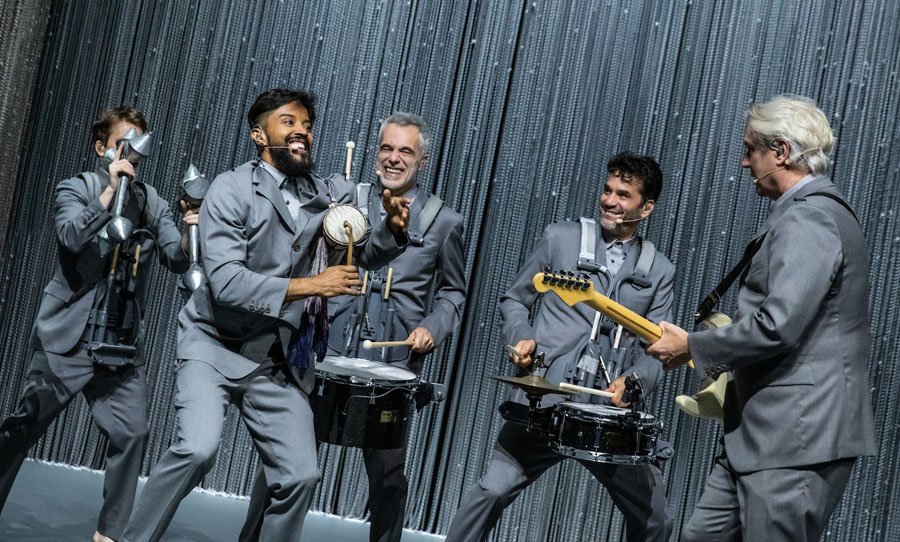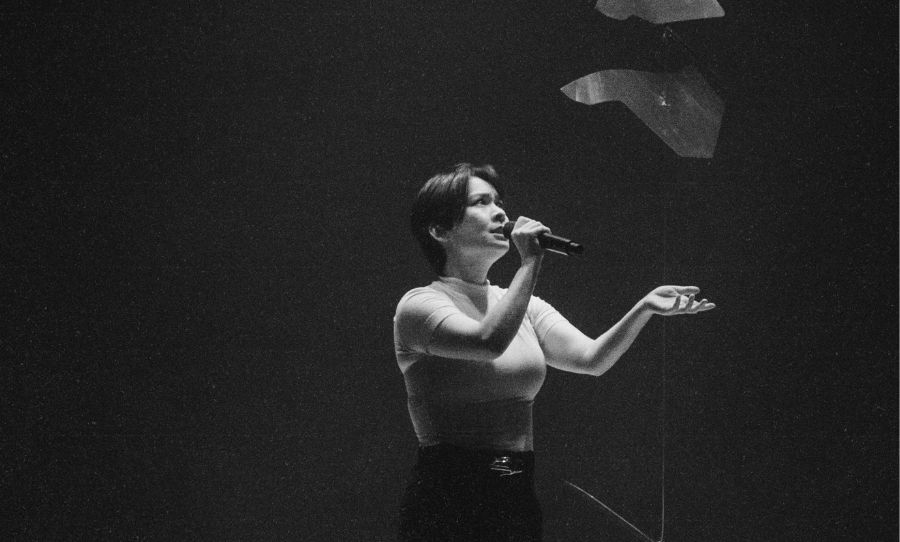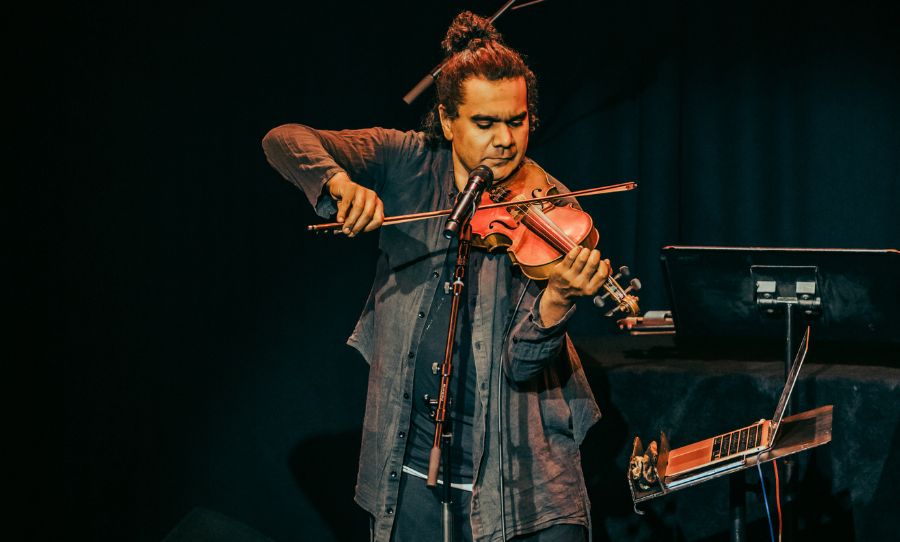The percussion family consists of the widest range of instruments seen in any instrument family. An orchestral percussionist, for example, needs to master a huge variety of instruments, each with their own specific techniques. Today, the section continues to expand, and percussionists are asked to play whatever object lands in their hands, from world percussion instruments to household objects and children’s toys.
With a vast, unparalleled sound palette, percussion instruments have become some of the most engaging ways to create distinctive and unique sounds. Take a look at some of the ways musicians have used percussion instruments to travel to new sound worlds.

Percussion instruments are always at the forefront of musical innovation. Take a look at how musicians have used percussion to usher in brand new ideas.
Percussion in the orchestra
The orchestral percussion section today consists of the widest range of instruments of any orchestral family, but until the Romantic period, the timpani were the only gear that made a regular appearance. Cymbals and snare drums were not unusual before this time, but they weren’t entirely common.
As the Romantic period continued, composers began to look for more evocative sounds. Tchaikovsky famously requested a cannon battery for his 1812 Overture, in a more extreme example.
However, it wasn’t until the 20th century that percussion instruments fully came into their own. In 1931, Edgard Varèse completed Ionisation, a work for thirteen percussionists and among the first pieces composed for percussion ensemble alone.
The work, which later inspired Frank Zappa to pursue a career in music, featured almost 40 different percussion instruments, including sirens, anvils, and a friction drum called a lion’s roar.
From that point, composers began to use innumerably diverse sounds as percussion instruments, from hand claps to metronomes to amplified 2-by-4s. In 1940, John Cage’s Living Room Music invited percussionists to play whatever items they had at hand in their living room—books, cutlery, furniture, and so on.
Today, composers still call on their percussionists to do their dirty work, as more and more instruments and objects get added to the roster of tasks to master. Among all this, percussionists are still called upon for the delicate touch of the classical percussion roster, alongside the drum set language of pop, rock, and jazz. The result is a dazzling array of sounds and effects like no other group of instruments is capable of producing.
Percussion from around the world
While non-Western instruments from other families are fairly rare in Western music, such percussion instruments have made regular appearances in all genres of Western music, from jazz and pop to classical music.
There is a range of non-Western percussion instruments that are familiar to most listeners these days. These range from the African djembe and talking drum, South Asian tabla, and East Asian gongs, to the tambourine, an instrument played the world over that was popularised in Europe by the Romani people.
Latin and Caribbean percussion instruments are particularly well known and include bongos and congas, claves, the güiro, steel pan and maracas. In fact, the majority of percussion instruments have origins outside the Western world.
Other less familiar instruments include the dhol, a barrel drum found in the banghara music of Punjab, the caxixi, a woven basket shaker used in both West African and Brazilian capoeira music, and the log drum, used in many African cultures for communication. There are more percussion instruments around the world than can be listed, but that has provided musicians from all genres with endless sources of new sounds and inspirations.
Various styles of percussive music from around the world have also been emulated by a variety of musicians. The music of the Yoruba people of West Africa, which is built around an extremely sophisticated drumming tradition, has widely influenced Latin and Caribbean styles, most significantly in the music of Cuba.
The Japanese taiko tradition has appeared in various contexts in the film world, and as far back as 1889 French composers Claude Debussy and Maurice Ravel first heard Indonesian gamelan at the Paris World’s Fair, an encounter that would shape the music they wrote for the remainder of their careers.
Percussion in film
Percussion instruments from a number of origins have been used extensively in film music for greater immersion into the world of the film. In 2000, Chinese wuxia film Crouching Tiger, Hidden Dragon became a surprise success in the Western world. The film received ten Oscar nominations, the highest ever for a non-English language film, including a win in the Best Original Score category for Tan Dun.
The score was successful in merging Chinese and Western elements, including a number of notable cello solos performed by Yo-Yo Ma. One of the most striking components of the score is the use of percussion, performed by the Shanghai Percussion Ensemble and soloist David Cossin. The percussion, which also merges Chinese and Western influences, accompanies the unique, highly stylised action scenes in the film.
Another fusion of styles occurs in Wes Anderson’s Isle Of Dogs. Composer Alexandre Desplat, known for his ability to adapt to any genre or style, produced a score that earned him his third Oscar nomination, after previously winning for his scores to The Shape Of Water and Anderson’s The Grand Budapest Hotel.
Alongside tracks used by Akira Kurosawa in films such as Seven Samurai, Desplat created a sound world that blends taiko drumming with the sound of mid-century American jazz, mirroring Anderson’s Japan-inspired diorama.
The score that thwarted Desplat’s designs on a hat trick of Oscars was Ludwig Göransson’s score for the groundbreaking Black Panther. Göransson, a frequent collaborator of Childish Gambino, set out to create a score that crossed the boundary between typical superhero film scores and traditional African music. Göransson travelled to Senegal to research for the score, where he met and consulted with musician Baaba Maal, who contributed vocals to the final soundtrack.
For the main motif representing T’Challa/Black Panther, Göransson combined the sounds of talking drums with the beat from a Roland TR-808, creating a unique texture that combined the traditional with the modern. Göransson took the idea a step further in his theme for the antagonist Killmonger, integrating a modern trap beat that mirrors the traditional African instruments, representing the modern side of the character. When the two characters compete, the soundtrack merges the African and electronic instruments effortlessly.
Göransson then used Western orchestral instruments alongside these texutres. As the brass swell and the strings sweep in, the sound of Africa brings an intimacy to the world of Wakanda. The Western instruments tick all the traditional superhero score boxes, but the African percussion delivers a personal, human touch to the sound.
Percussion in pop
Percussion has always been a crucial component of pop music, but instruments other than a drum kit have typically been rare. In the ’80s, musicians began using electronic drum machines and various sampling techniques. For a long time these systems too referred primarily to the established language of the drum kit, however, many musicians have incorporated unconventional percussion instruments into their music, and the results have been significant.
In the ’70s, David Byrne of Talking Heads was an avid listener of a wide variety of music from across the world. Nigerian musician Fela Kuti was a particular point of inspiration, and the opening track from Talking Heads’ 1979 album Fear Of Music, I Zimbra, showed the beginnings of Byrne’s interest in integrating African sounds with art-rock. This idea was explored more deeply on their follow-up album, Remain In Light.
Byrne would later establish Luaka Bop, a record label designed to represent sounds from around the world, eschewing the ‘world music’ terminology disdained by Byrne. Byrne’s major artistic focus since the late ’70s has revolved around removing the barriers between genres, and percussion instruments have been some of his largest weapons.
Most recently, his enormous tour in support of his album American Utopia culminated in a Broadway show, and featured an arsenal of percussionists from around the world, performing a variety of styles and instruments, creating a vision of this utopia.
In the world of jazz, the maximalist approach of Sun Ra resulted in an array of influences from all genres. As early as 1955, Sun Ra was using timpani in his Arkestra, although Duke Ellington had previously used timpani in his work.
Sun Ra, though, pushed his use of timpani in jazz further than anyone had before, and the liner notes to The Heliocentric Worlds Of Sun Ra, Volume One credit four different timpanists, including Sun Ra himself. The album also features the bass marimba and electric celeste, both percussive elements that were unfamiliar to the language of jazz.
Sun Ra’s insistence that all instrumentalists in his ensembles doubled on percussion instruments led to a wide range of sounds and textures. The nature of this setup contributed to the freedom of sound Sun Ra was pursuing.
In New York in the mid-’60s, Sun Ra’s Arkestra began developing a unique spin on African drum technique, relying on variations sound rather than structural ideas, and as a group, they understood the principle that simple parts would sound complex when combined.
Percussion today
As technology develops, percussive elements from non-traditional sources are becoming increasingly common. Sampling, for example, has been a foundational component of hip-hop since the ’80s, and it is becoming an essential ingredient of songwriting across all genres of music.
Today, the ease of use of DAW software enables musicians to utilise field recordings like never before. Previously the territory of the avant-garde, musicians can now easily manipulate raw audio for unique percussive effects.
Billie Eilish sampled the Sydney pedestrian crossing alert in bad guy, and experimental hip-hop trio clipping. (featuring Daveed Diggs of Hamilton fame) often avoid traditional drum sounds altogether, creating beats from sources like alarm clocks and gunfire.
Musicians have always treated percussion instruments with an imaginative touch. For hundreds of years, percussions instruments have been a key component of the avant-garde, signalling new artistic movements and ideas. As music continues to expand beyond classification, percussion instruments will always be the bellwether of change.



